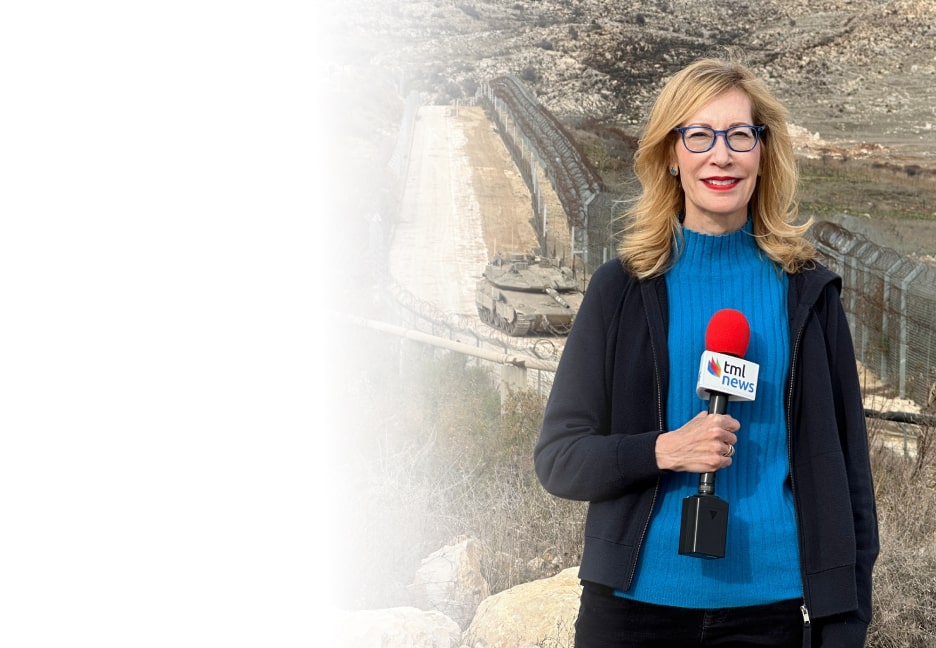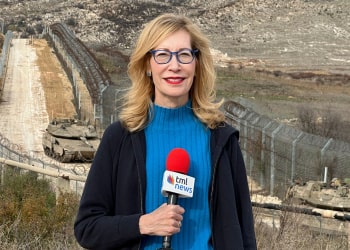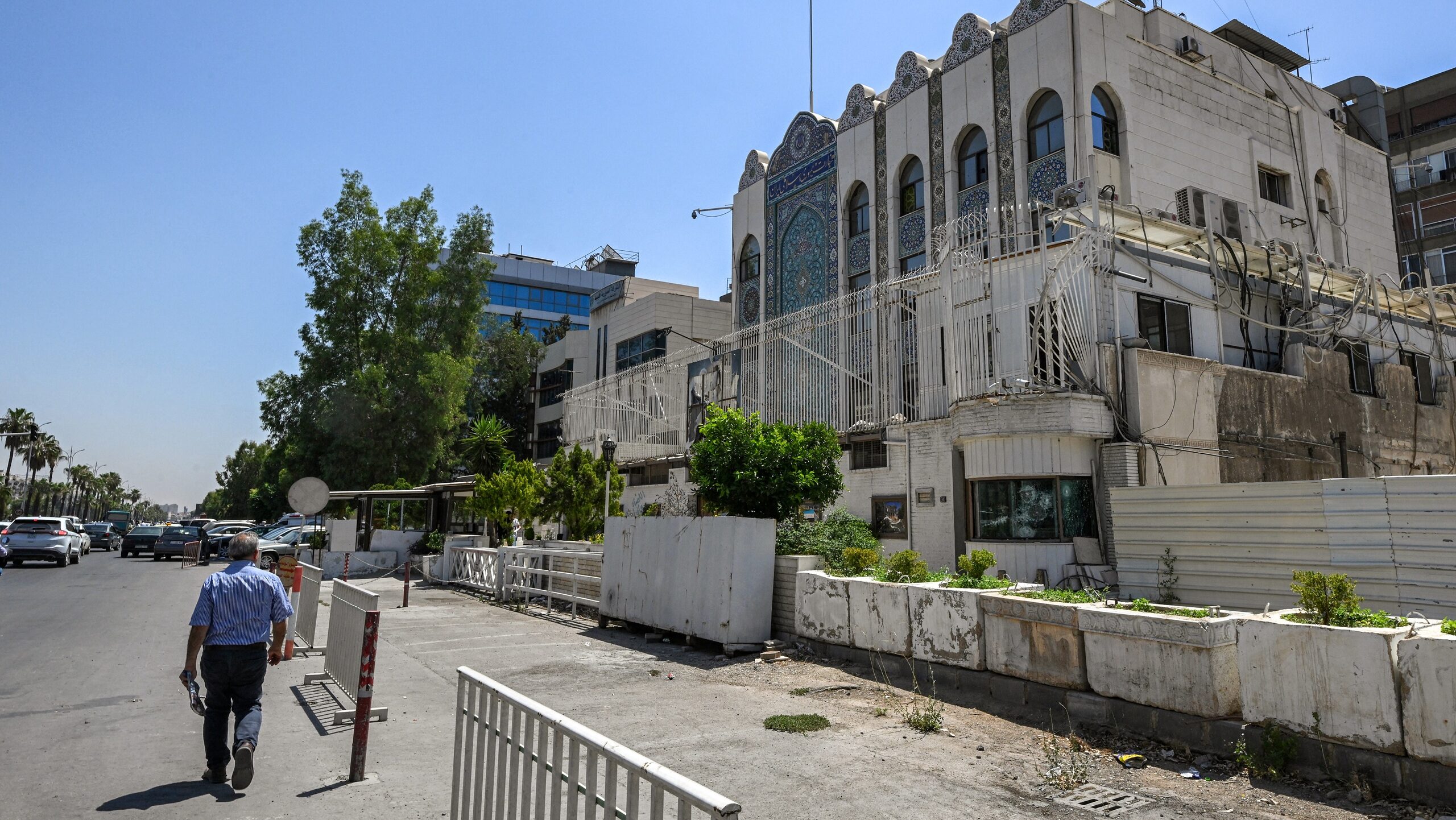Hezbollah Down, IRGC Out: Silence on Israel’s Northern Front
Iran’s unraveling influence in Syria and Lebanon reflects a broader collapse of its regional strategy as Israel escalates direct confrontation
[Damascus] When Israeli warplanes struck deep into Iran’s nuclear infrastructure this past weekend, northern Israel braced for the usual blowback: rockets from Hezbollah positions near Habbariyeh in southern Lebanon and drones launched from around Homs in Syria.
This time, only Iran launched missiles—one of which struck Haifa from over 1,500 kilometers (about 930 miles) away—while its neighborhood proxy Hezbollah stayed out of the fight and leaders in Damascus quietly watched.
That silence indicates more than restraint. It reflects a strategic unraveling for Tehran. What was once a tightly coordinated “axis of resistance,” anchored by Hezbollah and Iran’s Islamic Revolutionary Guard Corps (IRGC) forces in Syria, has fragmented under sustained military pressure and shifting political alliances. From Beirut to Damascus, the deterrence map has changed.
“If the previous Syrian regime were still in power, Syria would have been the first to join Iran—and the first to be bombed,” Sultan Muflih Al-Furaij, a Damascus-based academic and security analyst, told The Media Line. “From 2011 to 2024, Syria was economically dependent and politically subordinate to Tehran. Iran flooded our markets with goods, while our exports went nowhere.”
That dynamic, he added, no longer defines the country.
Syria today seeks national unity, civil peace, and reconstruction—not proxy warfare
“Syria today seeks national unity, civil peace, and reconstruction—not proxy warfare,” Al-Furaij said.
Many ordinary Syrians echo that shift.
Since the fall of Assad and his Iranian allies, I finally feel safe. We’re exhausted by war.
“I used to sleep in fear,” Lana Al-Hadi, a journalist from As-Suwayda now based in Damascus, told The Media Line. “Iranian students filled our dorms, Israeli bombs struck nearby targets. Since the fall of Assad and his Iranian allies, I finally feel safe. We’re exhausted by war. Syrians want dialogue, not foreign agendas.”
That exhaustion carries political weight.
“In the past, the Syrian regime promised to retaliate against Israeli strikes—but never did,” Muhammad al-Saadi, a mosque preacher near al-Kiswah, told The Media Line. “The new government under President Ahmed al-Sharaa is more realistic. But the public still expects action. Both Iran and Israel have harmed Syria, and silence won’t last forever.”
Syria’s break with Hamas dates to 2011, when the Palestinian movement cut ties after Bashar Assad’s violent crackdown on mostly Sunni protesters. Damascus had hosted Hamas leaders for years, presenting itself as a pan-Arab stronghold in the resistance axis.
That role collapsed when Hamas moved its leadership to Qatar. Assad’s sectarian turn demolished Syria’s credibility. Tehran continued to support Hamas and Hezbollah militarily, but Syria lost its strategic importance. Even after Tehran and Hamas reconciled, Damascus became little more than a logistical waypoint.
This holiday season, give to:
Truth and understanding
The Media Line's intrepid correspondents are in Israel, Gaza, Lebanon, Syria and Pakistan providing first-person reporting.
They all said they cover it.
We see it.
We report with just one agenda: the truth.


In 2013, Hezbollah fought alongside regime forces in Qusayr, near the Lebanese border, in an operation that marked its full-scale entry into Syria’s war. Human rights monitors estimate between 250 and 400 Sunni civilians were killed. Neighborhoods were cleared, homes burned, families executed. The assault cemented Hezbollah’s role as Tehran’s enforcer.
Now, twelve years later, Hezbollah has withdrawn from Qusayr and from Sayyida Zaynab, a once-fortified Shiite enclave in southern Damascus. What had been a forward base is now a vacuum.
But the retreat of Iran’s proxies has left gaps. On Sunday, gunmen opened fire near the Sayyida Zaynab shrine, Syria’s most important Shiite religious site, during Eid al-Ghadir celebrations. Bullets struck the minaret, sending worshippers fleeing in panic. For years, the shrine had been protected by Hezbollah and Iraqi militias, who used its defense to justify foreign intervention. With those forces gone and Public Security nominally in control, the attack raised concerns.
No fatalities were reported, but the incident poses an early test for al-Sharaa’s transitional government.
His administration claims to be restoring sovereignty and dismantling militia rule, but the Sayyida Zaynab shooting undermined that narrative. Was it an anti-Shiite provocation, a local power struggle, or a warning to the post-Assad order? The effort to de-securitize religious space is colliding with persistent instability.
Russia’s military intervention in 2015 proved decisive for Assad’s survival. Rebel forces had made major gains, but Russian airpower and special forces reversed the tide, securing regime strongholds and protecting Moscow’s military bases at Tartous and Hmeimim. The campaign expanded into intelligence operations and the deployment of Wagner Group mercenaries.
The civilian toll was devastating. Monitors estimate that Russian airstrikes killed between 8,800 and 25,000 people. The White Helmets documented 4,000 deaths from Russian bombs—over 1,100 of them children. Hospitals and markets were repeatedly struck in what rights groups describe as a deliberate strategy.
The financial cost was also enormous: an estimated $2.5 billion to $3 billion per year during peak years, totaling over $27 billion. Officially, Russian military deaths were low—just over 100 confirmed—but hundreds of Wagner fighters died, especially in battles around Palmyra and Deir Ezzor. By 2024, with rising costs and the war in Ukraine intensifying, President Vladimir Putin recalibrated. Assad was no longer worth the burden.
To maintain its position, the Kremlin backed an Arab League-brokered transition that removed Assad and installed al-Sharaa. His government expelled militias, shut down smuggling corridors, and pledged to end factional rule.
Iran’s involvement in Syria was equally costly. By 2018, it had deployed 15,000 troops, backed by tens of thousands of militia fighters. According to both official and independent sources, 2,100 Iranian soldiers had died by that year, including 342 IRGC personnel. More than 39 IRGC generals were killed in battles in Aleppo and Damascus. By 2024, total militia deaths had exceeded 10,600.
Financially, Iran invested an estimated $30 billion to $50 billion—roughly 10% of its gross domestic product—peaking at $6 billion in annual transfers. By late 2024, Iranian officials were warning that Syria had become a $50 billion write-off, with no expectation of reimbursement.
The combined toll—both human and economic—became unsustainable. IRGC units began to withdraw. Russia also pulled back. Assad’s fall left Tehran with no reliable proxy and no political base in Syria.
Meanwhile, Hezbollah’s once-vaunted arsenal has been degraded. Israeli strikes in Dahiyeh and Ain Qana destroyed drone workshops. More than 40 Iranian arms shipments to Hezbollah have reportedly been intercepted since late 2024.
“Hezbollah and Hamas lack the capability to meaningfully enter the missile war,” Wolfgang Pusztai, senior adviser at the Austrian Institute for European and Security Policy, told The Media Line. “Their missiles are short-range and low-altitude—easily intercepted by Iron Dome. They might force some Israeli Air Force reallocation, but they won’t change the equation.”
In August 2024, a Mossad operation known as Operation Grim Beeper detonated tracking devices hidden in Hezbollah’s old-style pagers. The blasts exposed underground depots—some concealed in mosques—and Iranian electronic warfare equipment. Hezbollah’s communications infrastructure collapsed.
The following month, Israeli strikes killed Hezbollah Secretary-General Hassan Nasrallah. Then a missile flattened the Iranian consular residence in Damascus, which had served as the IRGC’s central command hub. Dozens were killed, including senior Iranian officers and civilians nearby.
The state-run Syrian Arab News Agency broadcast images of stunned families clearing rubble and surveying damage to nearby buildings, revealing deep unease in Mezzeh—an upscale residential and diplomatic district in western Damascus.
Long considered one of the safest areas in the capital, Mezzeh is home to government offices, foreign embassies, and a largely compliant population that had supported, or at least tolerated, Assad’s rule and Iran’s military presence.
The strike shattered that perception of security, exposing even the regime’s inner circle to the risks of Tehran’s entanglements.
As Israeli-Iranian tensions escalated again this past weekend, a sense of uncertainty returned—but not outright panic. Damascus International Airport suspended flights, and Lebanon rerouted air traffic as precautionary measures.
Hezbollah’s response remained muted. Al Manar mourned fallen IRGC commanders but stopped short of calling for retaliation. Lebanese officials urged calm, warning that any escalation could jeopardize international aid.
Lebanon’s army increased patrols south of the Litani River. Yet red lines once marked by rocket fire have remained intact.
Hezbollah still has missiles that can reach Tel Aviv. But its logistics are broken, its leadership decapitated, and its deterrence eroded.
“Hezbollah still has missiles that can reach Tel Aviv,” Pusztai said. “But its logistics are broken, its leadership decapitated, and its deterrence eroded.”
For the moment, Beirut and Damascus are quiet.
“The silence we’re seeing isn’t just restraint,” said Al-Furaij. “It’s a second chance—for Syria, and for the region.”
Jacob Wirtschafter reported from Istanbul.

